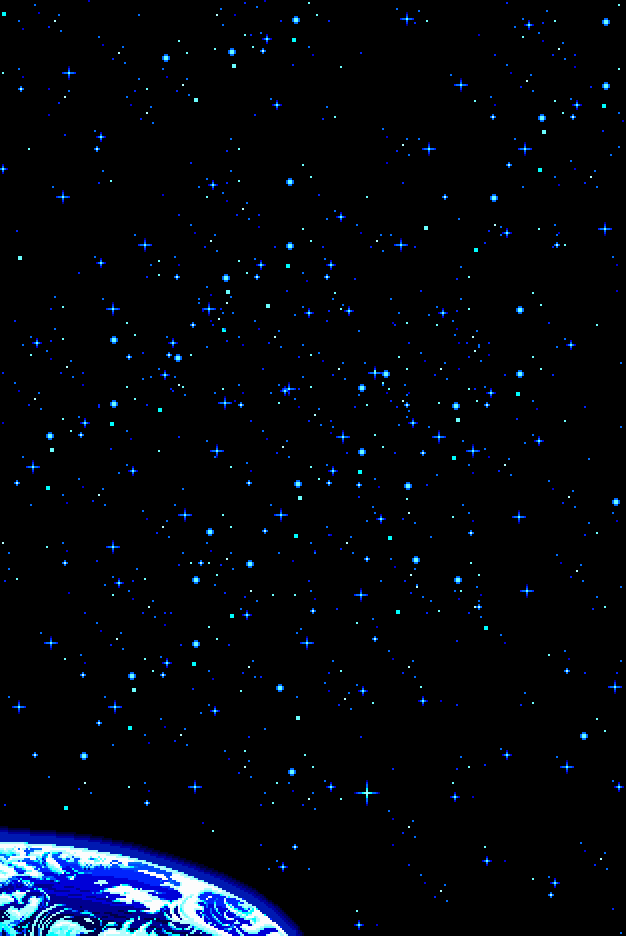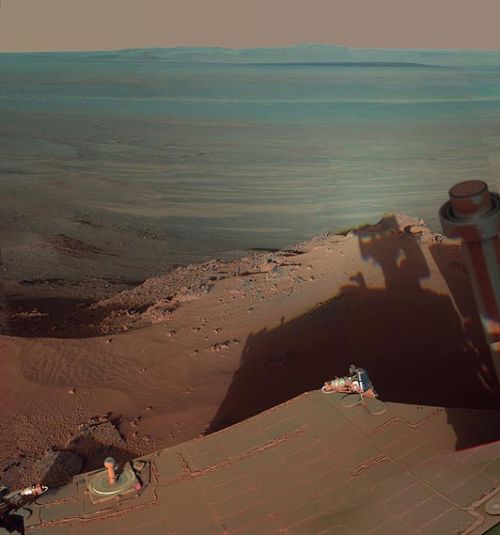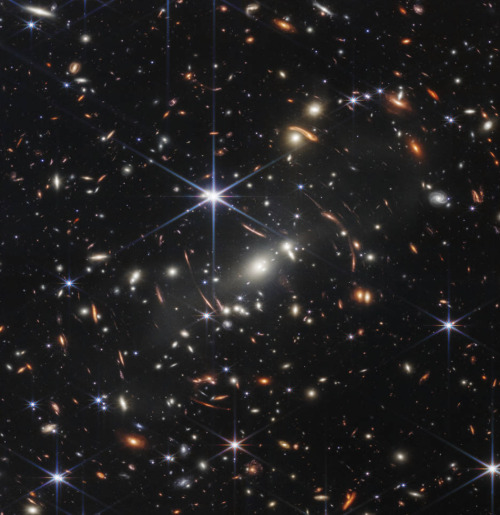Astronaut Tweets
Astronaut tweets























More Posts from Starlost and Others
🤠🤠🤠🤠


(Link)


Waltzing dwarfs
This seemingly unspectacular series of dots with varying distances between them actually shows the slow waltz of two brown dwarfs. The image is a stack of 12 images made over the course of three years with the Hubble Space Telescope. Using high-precision astrometry, an Italian-led team of astronomers tracked the two components of the system as they moved both across the sky and around each other. The observed system, Luhman 16AB, is only about six light-years away and is the third closest stellar system to Earth — after the triple star system Alpha Centauri and Barnard’s Star. Despite its proximity, Luhman 16AB was only discovered in 2013 by the astronomer Kevin Luhman. The two brown dwarfs that make up the system, Luhman 16A and Luhman 16B, orbit each other at a distance of only three times the distance between the Earth and the Sun, and so these observations are a showcase for Hubble’s precision and high resolution.
Credit: ESA/Hubble & NASA, L. Bedin et al.
![The Lightest (i.e., Least Massive) Known Star, OTS 44 [3000 X 2400]](https://64.media.tumblr.com/7ce349b6a3bf21005fa9d453fc4e3790/tumblr_n6d9w27NCh1tuy5mao1_500.jpg)
The lightest (i.e., least massive) known star, OTS 44 [3000 x 2400]


The planet Uranus. Taken on November 14th 2009 at 3:52 am. Using the 98 in Hooker telescope.




See intricate cloud patterns in the northern hemisphere of Jupiter in this new view taken by NASA’s Juno spacecraft.
The color-enhanced image was taken on April 1 at 2:32 a.m. PST (5:32 a.m. EST), as Juno performed its twelfth close flyby of Jupiter. At the time the image was taken, the spacecraft was about 7,659 miles (12,326 kilometers) from the tops of the clouds of the planet at a northern latitude of 50.2 degrees.
Image credits: NASA/JPL-Caltech/SwRI/MSSS/Kevin M. Gill




Space systems, some discarded ideas from a school asignment that I still really like

This first image from NASA’s James Webb Space Telescope is the deepest and sharpest infrared image of the distant universe to date. Known as Webb’s First Deep Field, this image of galaxy cluster SMACS 0723 is overflowing with detail. Thousands of galaxies – including the faintest objects ever observed in the infrared – have appeared in Webb’s view for the first time. This slice of the vast universe covers a patch of sky approximately the size of a grain of sand held at arm’s length by someone on the ground.
-
 lucybuttriver reblogged this · 2 weeks ago
lucybuttriver reblogged this · 2 weeks ago -
 crimson-miz liked this · 2 weeks ago
crimson-miz liked this · 2 weeks ago -
 coopdawgthesciencefrog reblogged this · 2 weeks ago
coopdawgthesciencefrog reblogged this · 2 weeks ago -
 rosedaggers liked this · 2 weeks ago
rosedaggers liked this · 2 weeks ago -
 jaguar-bomb reblogged this · 2 weeks ago
jaguar-bomb reblogged this · 2 weeks ago -
 jkflay reblogged this · 2 weeks ago
jkflay reblogged this · 2 weeks ago -
 jkflay liked this · 2 weeks ago
jkflay liked this · 2 weeks ago -
 hel-wey liked this · 2 weeks ago
hel-wey liked this · 2 weeks ago -
 theweirdestroller liked this · 2 weeks ago
theweirdestroller liked this · 2 weeks ago -
 kentrix11 reblogged this · 2 weeks ago
kentrix11 reblogged this · 2 weeks ago -
 viridian-bones liked this · 2 weeks ago
viridian-bones liked this · 2 weeks ago -
 waterdrag0n101 reblogged this · 2 weeks ago
waterdrag0n101 reblogged this · 2 weeks ago -
 btwimkindagay liked this · 2 weeks ago
btwimkindagay liked this · 2 weeks ago -
 jaime-might-lose-it-soon liked this · 2 weeks ago
jaime-might-lose-it-soon liked this · 2 weeks ago -
 fieryheart959 reblogged this · 2 weeks ago
fieryheart959 reblogged this · 2 weeks ago -
 kittydemon9000 reblogged this · 2 weeks ago
kittydemon9000 reblogged this · 2 weeks ago -
 when-illusion-spin-her-net reblogged this · 2 weeks ago
when-illusion-spin-her-net reblogged this · 2 weeks ago -
 skelevision reblogged this · 2 weeks ago
skelevision reblogged this · 2 weeks ago -
 skelevision liked this · 2 weeks ago
skelevision liked this · 2 weeks ago -
 hailmaryfullofgrace55675 liked this · 2 weeks ago
hailmaryfullofgrace55675 liked this · 2 weeks ago -
 when-illusion-spin-her-net liked this · 2 weeks ago
when-illusion-spin-her-net liked this · 2 weeks ago -
 existentialcanadian liked this · 2 weeks ago
existentialcanadian liked this · 2 weeks ago -
 fe3lthethunder reblogged this · 2 weeks ago
fe3lthethunder reblogged this · 2 weeks ago -
 fe3lthethunder liked this · 2 weeks ago
fe3lthethunder liked this · 2 weeks ago -
 silver-tounges-and-golden-lies reblogged this · 2 weeks ago
silver-tounges-and-golden-lies reblogged this · 2 weeks ago -
 lonestarwolf2006 reblogged this · 2 weeks ago
lonestarwolf2006 reblogged this · 2 weeks ago -
 ostewell reblogged this · 2 weeks ago
ostewell reblogged this · 2 weeks ago -
 toffee-rambles reblogged this · 2 weeks ago
toffee-rambles reblogged this · 2 weeks ago -
 darkbluesunlight reblogged this · 2 weeks ago
darkbluesunlight reblogged this · 2 weeks ago -
 an-illiterate-bastard reblogged this · 2 weeks ago
an-illiterate-bastard reblogged this · 2 weeks ago -
 an-illiterate-bastard liked this · 2 weeks ago
an-illiterate-bastard liked this · 2 weeks ago -
 silverrose17 liked this · 2 weeks ago
silverrose17 liked this · 2 weeks ago -
 asoftbeing liked this · 2 weeks ago
asoftbeing liked this · 2 weeks ago -
 yourlocalpandisaster reblogged this · 2 weeks ago
yourlocalpandisaster reblogged this · 2 weeks ago -
 yourlocalpandisaster liked this · 2 weeks ago
yourlocalpandisaster liked this · 2 weeks ago -
 the-dishes-need-doing reblogged this · 2 weeks ago
the-dishes-need-doing reblogged this · 2 weeks ago -
 weak2star reblogged this · 2 weeks ago
weak2star reblogged this · 2 weeks ago -
 weak2star liked this · 2 weeks ago
weak2star liked this · 2 weeks ago -
 larksongkitty reblogged this · 2 weeks ago
larksongkitty reblogged this · 2 weeks ago -
 glassblossomsthunderstorm reblogged this · 2 weeks ago
glassblossomsthunderstorm reblogged this · 2 weeks ago -
 transgender-daemon-faerie reblogged this · 2 weeks ago
transgender-daemon-faerie reblogged this · 2 weeks ago -
 hm01yourhair reblogged this · 2 weeks ago
hm01yourhair reblogged this · 2 weeks ago -
 myrinthinks reblogged this · 2 weeks ago
myrinthinks reblogged this · 2 weeks ago -
 myrinthinks liked this · 2 weeks ago
myrinthinks liked this · 2 weeks ago -
 blessedbenightwingsass liked this · 2 weeks ago
blessedbenightwingsass liked this · 2 weeks ago -
 creepingcrystalsystem reblogged this · 2 weeks ago
creepingcrystalsystem reblogged this · 2 weeks ago -
 creepingcrystalsystem liked this · 2 weeks ago
creepingcrystalsystem liked this · 2 weeks ago

andrei, he/him, 21, made this at 14 when i was a space nerd but i never fully grew out of that phase so,,,,..,hubble telescope + alien life + exoplanet + sci fi nerd
245 posts